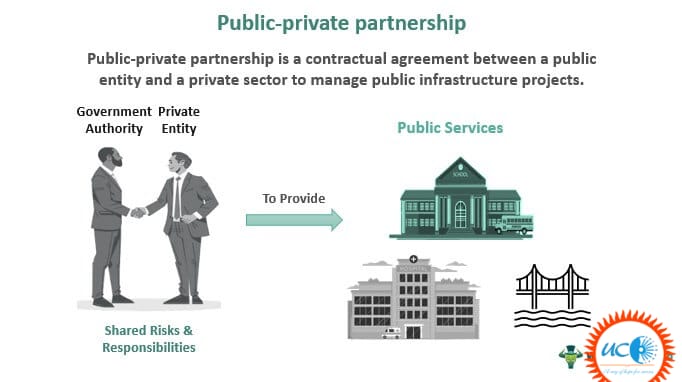Why is Public Private Partnership (PPP) required in infrastructure projects? Examine the role of the PPP model in the redevelopment of Railway Stations in India.
Introduction
Public-private partnerships (PPPs) are formally established agreements between public and private parties to share risks and benefits in the provision of public services and infrastructure.
Body
Importance of PPP in Infrastructural Projects:
PPP’s role in India’s railway system’s redevelopment:
- Improved Investments: E.g. Indian Railways Stations Development Corporation (IRSDC), was created in 2012 as a special purpose vehicle (SPV) for redeveloping stations and building new ones through PPP.
- Maximising land use: The Rail land development Authority has adopted private equity model for developing land creating employment.
- Railway modernization: Gandhinagar redeveloped railway station have airport-like facilities and the space above railway station has been given to Leela Gandhinagar. It is India’s first hotel to be built above railway tracks.
One more example is of station Habeebganz.
- Economic hubs: The National Infrastructure pipeline anticipates investing Rs. 11.43 lakh crore in Indian Railways between 2024 and 2025.
- Redeveloped train stations will draw more investment: They will improve the area’s tourism potential, increase real estate values, promote job creation, and have a domino impact on the regional economy.
- Railroad development as an asset rather than a service: Station renovation is planned by utilising the real estate potential of separable ground and air space in and around the stations.
Way Forward: Vijay Kelkar Committee Report on Revisiting and Revitalising PPP Mode should also be considered.
Proposed reforms:
- A PPP statute that provides implementing executives with a strong framework.
- IPRC (Infrastructure PPP Project Review Committee), which assesses strained PPP projects.
- Swiss challenge method: used to thwart unsolicited bids while granting contracts.
The Indian Railways is just one example of how PPP can speed up infrastructure construction. To unlock innovation’s richness of benefits and reach the target of a $5 trillion economy by 2024, it will be necessary to support it and learn from people around the world.







